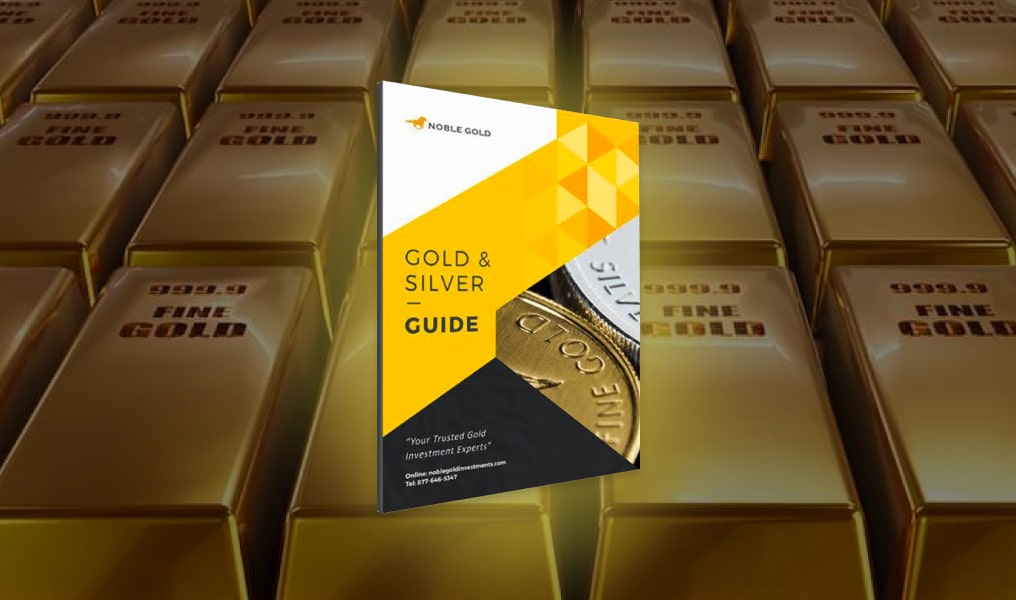Responsible retirement planning involves diversifying your portfolio with a wide range of investment products and assets. This protects you against potential market volatility that could impact your account’s performance as well as the impacts of inflation.
One of the most popular retirement planning options for Americans is the Individual Retirement Account or IRA. While there are a wide range of IRAs available to choose from, many investors choose to invest in a self-directed IRA (SDIRA) for the flexibility they offer, especially when it comes to investing in non-conventional assets like precious metals.
Keep reading to learn more about the pros and cons of opening a self-directed IRA and whether or not an SDIRA is a good choice for your retirement planning.
What is a Self-Directed IRA?
A self-directed IRA is an independent retirement account that can hold alternative investment products that wouldn’t be allowed in a conventional IRA. For example, an SDIRA can be used to hold precious metals like gold and silver or even artwork, in addition to traditional stocks, bonds, and mutual funds. While a custodian administers the account, the management of the assets is up to the client.
Self-directed IRAs are similar to conventional IRAs in many ways. These accounts still allow you to invest retirement savings on a tax-advantaged basis and have the same contribution limits as conventional IRAs. The major difference between the two is the types of assets you can hold in your account.
Just like with conventional IRAs, self-directed IRAs have an annual contribution limit. This limit changes yearly, but in 2022 it is $6,000, or $7,000 if you are 50 or older.
Traditional vs. Roth SD-IRA
The two main types of self-directed IRAs are traditional IRAs and Roth IRAs.
In a traditional IRA, you can invest money on a pre-tax basis. You won’t need to pay tax until you withdraw the money when you retire, which is defined as age 59.5 or older.
In a Roth IRA, you can invest cash on an after-tax basis. You’ll pay taxes on your contributions before they go into your account. Then, when you retire, you can withdraw your money tax-free.
There are a few other key differences between these types of IRAs:
- Traditional IRAs do not have income limits, but you must make less than a certain amount to open a Roth IRA.
- Traditional IRAs have required minimum distributions at age 72, but Roth IRAs do not have required minimum distributions.
- Traditional IRAs have withdrawal penalties until you turn 59.5, while Roth IRAs do not have any contribution withdrawal penalties.
- Traditional IRAs receive a tax break the year the contribution is made and taxes are paid when you withdraw from the account. Roth IRAs are taxed at the time of the contribution, but not when liquidated.
How to Open an SD-IRA?
When you open any IRA, you need a custodian or trustee to manage the account for you. Brokerage firms typically act as custodians for IRAs. However, you’ll probably have trouble finding a brokerage firm that offers self-directed IRAs.
Brokerages, banks, and investment companies typically do not offer self-directed IRAs because of the nature of these investment accounts. Because SDIRAs are “self-direct,” your custodian cannot provide investment advice or help you choose the right products to invest in.
Instead, you’ll need to look for custodians who specialize in these unique types of IRAs. Here are the steps you can take to open a self-directed IRA:
- Search for custodians: First, take time to research custodians who offer the types of investment products you would like to include in your IRA.
- Narrow your choices: Once you’ve found a few custodians offering your desired investment products, you can look at their fees, safety, and customer reviews to narrow your choices.
- Set up an account: When you have found your custodian, you can set up an account and pay any initial set-up fees.
- Fund your account: Finally, you’ll need to fund your new IRA. Many custodians require you to transfer funds from a conventional IRA rather than transferring money directly from your bank account.
The best SDIRA custodians have advisors who can walk you through the entire set-up process and answer any questions about the platform and the assets you’re considering as investments.
If you think you need help choosing the right products to include in your SDIRA, you may also want to hire a financial advisor. SDIRAs are a little more complicated than conventional IRAs, so having an advisor to assist you can help you feel more confident about your investment decisions.
Self-Directed IRA Investment Options
Self-directed IRAs can hold a wide range of assets. While most conventional IRAs stick to stocks, bonds, and mutual funds, SDIRAs can hold all of these products along with:
- Precious metals, such as gold, silver, and palladium
- Cryptocurrencies
- Private stock
- Artworks
- Commodities
- Real estate properties, such as houses
- Startup companies through crowdfunding platforms
- Foreign currency (Forex IRAs)
- Limited partnerships
- Tax liens on foreclosed properties
Some of these products must adhere to special rules within a self-directed IRA. As a result, working with a qualified custodian is essential to ensure that your account meets these guidelines.
Additionally, this list is not all-inclusive. You may find custodians who allow you to invest in other types of products. However, you should be sure that these custodians are legitimate and trustworthy and double-check their practices against IRS guidelines.
While you can invest in a wide range of products through an SDIRA, the IRS does prohibit a few items. For example, you cannot invest in the following in an SDIRA:
- Life insurance
- Collectibles (antiques, alcoholic beverages, art, coins, gems, rugs, or stamps)
You may want to check with a financial advisor to ensure that you are not violating any IRS guidelines for self-directed IRAs.
Advantages of a Self-Directed IRA
If you’ve never considered opening a self-directed IRA, you may be unsure of the advantages of these retirement accounts. The two main benefits of SDIRAs are their potential for generating higher returns and their ability to diversify your investment portfolio.
Potential for Higher Returns
Investing in a self-directed IRA gives you greater flexibility and control over the investments within your accounts. As a result, you can choose investment products with a greater chance of producing high returns.
For example, you may decide to put your retirement money in high-risk, high-reward investments that are not permitted in conventional IRAs. These alternative investments may generate higher returns than you could receive through a conventional IRA. As a result, your retirement savings may grow faster.
Increased Diversification
Investing in a self-directed IRA with alternative investment products can also help you diversify your investment portfolio.
Diversification is an important step in generating stable retirement savings. If you put all your eggs in one basket, so to speak, you risk losing your savings during a market crash. Additionally, investing only in conventional products like stocks, bonds, and funds makes your savings vulnerable to inflation, reducing the value of your contributions over time.
However, diversifying your portfolio with different investment products may make it less volatile for more stable growth over time. For example, holding gold in your SDIRA may protect your portfolio against market downturns, as the cost of gold tends to increase in value investors lose confidence in traditional assets. Many people also see gold as a hedge against inflation, as its value tends to increase with inflation.
Of course, there is no guarantee that diversifying your portfolio will keep your savings safe. However, the further you spread your investments around within your portfolio, the lower the risk you have of losing everything in a crash.
Risks Involved with a Self-Directed IRA
As with any investment, self-directed IRAs come with some risks. Understanding the risks of these accounts can help you make a more informed decision about investing in one.
Here are the most significant risks involved with SDIRAs:
Lack of Liquidity
One of the main reasons some people hesitate to invest in SDIRAs is their lack of liquidity. When you invest in conventional IRA products like stocks and bonds, you can quickly sell them to cash out your account and obtain your contributions and earnings. However, the products within SDIRAs tend to be less liquid.
For example, when you hold products like gold and silver in your SDIRA, you will need to find a buyer for these products in order to cash out your account. Many SDIRA custodians offer to buy back the precious metals they sell within their IRAs. However, if you need to sell your gold or silver quickly, you may have to accept less than you paid for it.
Fraud
Self-directed IRAs also have a slightly higher risk of fraud than conventional IRAs. Unfortunately, scammers sometimes use SDIRAS to make their schemes look legitimate.
However, knowing the signs of potential fraud can help you avoid this. For example, if a custodian you’re considering ever states that it approves of or has vetted an underlying investment, you can assume it is a scam. Additionally, if a custodian has few reviews or mainly negative ratings, you may want to avoid it.
Due Diligence
As the name states, SDIRAs are self-directed. This means you will be in control of the investments you hold within your IRA, and you must do due diligence to ensure that they are wise.
When you invest in a conventional IRA, your custodian may help you choose the products to hold in your account. However, the custodian of your self-directed IRA is not allowed to give financial advice. As a result, you will either need to vet your investments yourself or hire a financial advisor to assist you, which can increase the overall cost of investing in your SDIRA.
Lack of Transparency
Along with requiring due diligence, self-directed IRAs also require you to look deeply into their holdings and not just take the information custodians provide at face value. Unfortunately, SDIRA custodians are not always transparent about the valuations of the products they offer in retirement investment accounts.
For example, a gold IRA custodian may state the value of the gold in your account, but this number may be far off from the actual amount you’ll receive when you sell the asset. Additionally, your custodian may make exiting the investment seem like a piece of cake when you actually need to jump through several hoops to sell your investment products and “cash out.”
This disadvantage ultimately depends on the custodian you work with. Choosing a reliable SDIRA custodian may allow you to trust its transparency more.
Concentrated Portfolios
Even though self-directed IRAs allow you to diversify your investment portfolio, these accounts themselves are typically not very diverse. In other words, you usually cannot use an SDIRA to invest in several types of products. Instead, you’ll be limited by the kinds of investments your chosen custodian offers.
In contrast, investing in exchange-traded funds through a conventional IRA does allow you to diversify a single retirement account. You can use ETFs to invest in a basket of several types of securities, such as commodities and private equity.
As a result, if you’re looking to diversify your portfolio with a self-directed IRA, you’ll want to use that IRA in conjunction with other investments. For example, you may pair your SDIRA with a 401(K) or a conventional IRA to round out your retirement accounts.
Prohibited Transactions
The IRS has strict rules about the prohibited transactions within an IRA. Because you are in charge of a self-directed IRA, you will need to make sure to follow these rules closely.
For example, if you use an SDIRA to invest in real estate, you cannot live in that property or use it for your own benefit. You also cannot use the property to enter into any deals with specific relatives.
You will need to think of your self-directed IRA as owning the assets within it. You cannot alter the assets within your IRA yourself; instead, the IRA will need to pay someone to alter them.
This rule may feel a little complicated. If you’re having trouble understanding it within the context of your own self-directed IRA, you can talk to a financial advisor for assistance.
Open A Self-Directed IRA Today!
Self-directed IRAs are a great choice for investors who want greater control over their retirement savings while maintaining the tax benefit of an IRA. If you’re looking to diversify your retirement investments with a lucrative, relatively stable investment product, you may want to consider investing in a precious metals IRA with Noble Gold Investments. You are able to buy gold bars, gold coins, silver bars, silver coins, and a wide range of other precious metals and coins.
We can walk you through the steps to open your new self-directed IRA, fund it with pre-existing retirement savings, and choose the precious metals to include in your account. Contact us today at 877-646-5347 to learn more.







